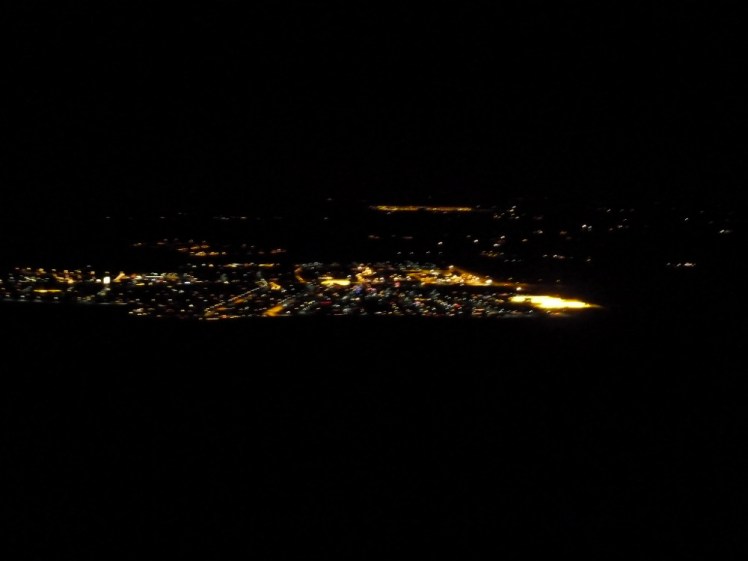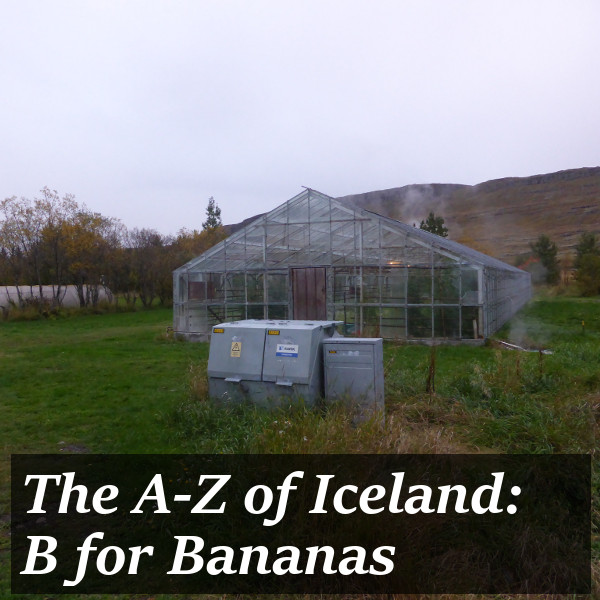Yes, well done me for choosing a subject for which I have no pictures! But there’s a reason for that. Welcome to the second episode of The A-Z of Iceland: B for Bananas! These are not just any bananas, these are Icelandic bananas!
If you go to Iceland you’ll hear almost as much about bananas as you will about Eyjafjalljökull. Exactly what you’ll hear will depend on who you’re hearing it from and some of it will conflict. Even now, I’m not 100% sure I’ve got the total truth of the matter on Icelandic bananas.
Ok. Backstory. Iceland is on a constructive plate boundary. That means two tectonic plates are pulling apart and the magma that comes to the surface is forming new land in Iceland. Some very hot molten rock is pretty close to the surface and if you drill a hole, you can find hot water down there. The pressure of being so deep down means it can remain liquid at temperatures unimaginable at surface pressure so when you bring that water up and the pressure drops, it suddenly turns to steam. You can use that steam to turn turbines and generate electricity. The Atlantic Ocean provides a never-ending supply of water to fall into that crack in the Earth and get heated.

It also has some big glaciers and big glaciers mean powerful rivers. In the Highlands, they harness some of those rivers to generate hydroelectric power.

In short, Iceland has a lot of cheap renewable green electricity. More than it needs. It uses a lot to smelt aluminium, one of its big three industries, along with tourism and fishing. But it uses some of it to power greenhouses.
Iceland’s climate is not conducive to growing things. It’s just too cold and the winds are too strong. But with endless electricity and hot water, you can keep greenhouses going for a long time and that means you don’t have to be quite so dependent on expensive imports.

The greenhouses grow things like vegetables. You’ll often find tomatoes for sale at the edge of the road. Tomatoes are good. Chillis. Cucumbers. Potatoes. Flowers. Smallish things. Trees grow fine in greenhouses but they’re not space-efficient.

And so we come to bananas. You can grow bananas in an Icelandic greenhouse. The country had a bit of a mania for them at one point. Winston Churchill allegedly said that eating Icelandic bananas had been one of his most peculiar events of WWII. I gather they were quite popular during the war, when imports were particularly difficult to get.
But eventually food supplies began to get through again and eventually Icelanders realised it had become cheaper and quicker to buy imported bananas than grow their own, especially when import duty on fruit was removed. Even in greenhouses, bananas grew slowly and I think they were smaller than the foreign variety.
At last, it just wasn’t worth the effort. People began to get rid of their unwanted banana plants – they went to the Agricultural University of Iceland, near Borgarnes, which effectively found itself with a banana rescue centre. They still have them now and still grow them but they’re not sold, not even to local shops, they’re all eaten by staff and students at the university.
The story of Icelandic bananas has become quite big, with many claiming it’s Europe’s biggest producer. It’s not true. I don’t think.
Like it? Pin it!
